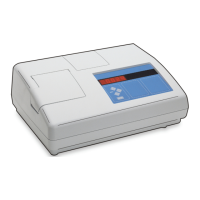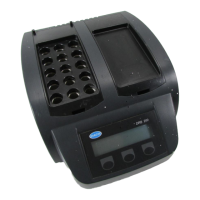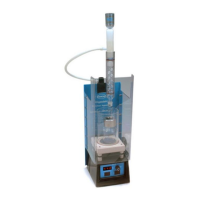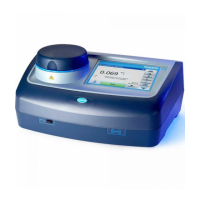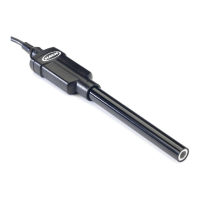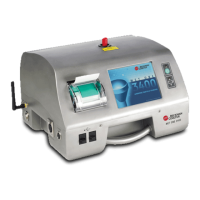Either ASC can be changed at any time, so recalibration is not
necessary.
The sample is under-range if the display flashes 0s.
If the display flashes 0s when measuring color, absorbance or
transmittance, set the analytical reference point again and measure
again. Also, make sure that the expected reading is positive when
measuring absorbance.
Initial ASC entry
Up to eight standards can be entered in either of the two application
specific calibrations (ASCs). Enter standards in order of increasing
turbidity.
A record of either ASC can be made on the printer for later analysis.
Refer to Make a print of ASC data points on page 48.
In Table 7 on page 47, a calibration that is not linear is made from five
standards of known mg/L concentrations. Corresponding NTU values
are identified by measuring the known standards with the instrument.
Note: Make sure that the instrument is calibrated before making NTU
measurements.
Program new ASC data
1. Push UNITS/Exit until the correct ASC unit name is shown on the
display (ASC -1- or -2-).
2. Push CAL/Zero to enter the ASC calibration mode.
The left digit flashes.
3. Use the arrow keys to enter a three-digit calibration name.
Note: The name cannot be one of the units already used NTU, NEP, EBC, %T,
A, CU, -1- or -2-).
4. Push ENTER.
The mode display flashes "01" for data point 1. The blank spaces
before of the NTU units ("----- NTU") show that no value is assigned
to the data point.
5. Push the right arrow key to change the value of the data point.
The display shows "0.0000" with the decimal flashing.
6. Push ENTER to accept the decimal point position.
The left digit of the display flashes.
7. Use the arrow keys to change the number on the display to the
correct NTU value. Refer to Table 7 on page 47 as an example.
8. Push ENTER to accept the NTU value.
The display shows "0.0000 MGL" with the decimal point flashing.
9. Push the right arrow key one time to move the flashing decimal point
one position to the right.
10. Push ENTER to accept the decimal point position.
The left digit of the display flashes.
11. Use the arrow keys to change the number on the display to the
correct mg/L (MGL) value for the data point . Refer to Table 7
on page 47 as an example.
12. Push ENTER to accept the MGL value.
The mode display flashes the next data point (e.g., "02" for data point
2).
13. Do steps 5–12 again until NTU and MGL values are entered for data
points 1–5.
Note: Push UNITS/Exit at any time to exit and not save the ASC calibration
values.
14. Push CAL/Zero to save the new ASC calibration.
"ERR13" is shown on the display if the NTU values are not entered in
ascending order or only one point has been entered. Push ENTER to
clear the error message and inspect the NTU values entered with the
up and down arrow keys. Refer to Change an ASC unit name or one
ASC data point on page 49.
Make a print of ASC data points
To make a print of application specific calibration (ASC) data points:
1. Push UNITS/Exit until the correct ASC name is shown on the
display.
2. Push CAL/Zero to enter ASC calibration mode.
The display flashes "EDIT?".
3. Push PRINT to make a print of the ASC data points.
48
English
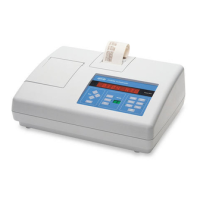
